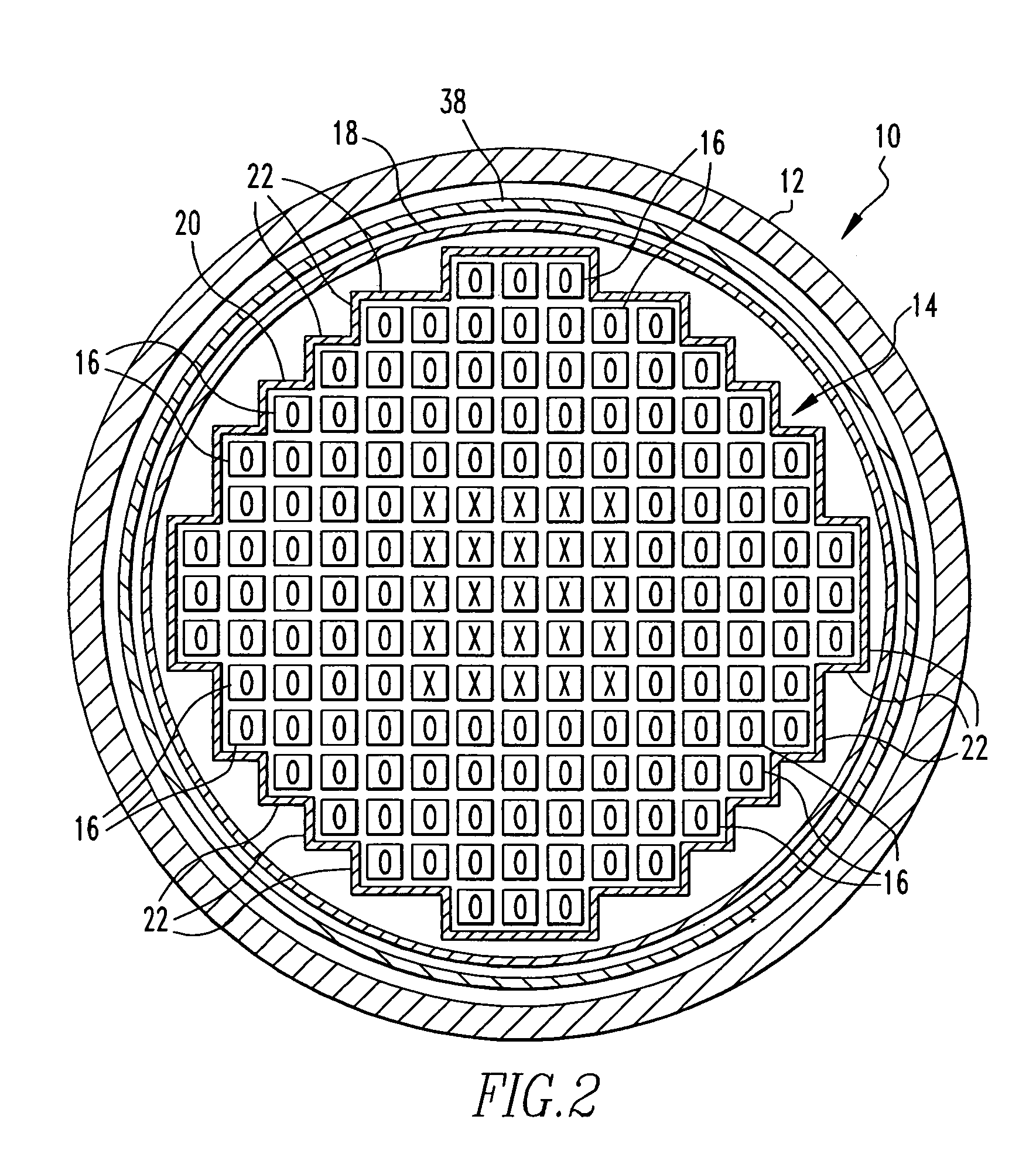Use of boron or enriched boron 10 in UO2
a technology of boron and uo2, which is applied in the direction of nuclear elements, greenhouse gas reduction, reactor fuel susbtance, etc., can solve the problems of limiting the amount of coating that can be contained within each rod, high overhead costs, and the cost of coating the pellets is high, so as to avoid the problem of pressurization, reduce the parasitic cross-section, and reduce the cost
- Summary
- Abstract
- Description
- Claims
- Application Information
AI Technical Summary
Benefits of technology
Problems solved by technology
Method used
Image
Examples
Embodiment Construction
[0019]Accordingly, the present invention provides a fuel assembly comprising a plurality of fuel rods, each fuel rod containing a plurality of nuclear fuel pellets, wherein at least one fuel pellet in more than 50% of said fuel rods in said fuel assembly comprises a sintered admixture of a metal oxide or metal nitride and a boron-containing compound. The boron-containing compound functions as the burnable poison in the fuel. The term “fuel pellet” is used herein to denote the individual sintered pellets of fuel that are loaded into a fuel rod. Preferably, at least one fuel pellet in more than 60% of the fuel rods in the fuel assembly contains a boron-containing compound. Even more preferably, at least one fuel pellet in more than 70–80% of the fuel rods in the fuel assembly contains a boron-containing compound.
[0020]When referring to any numerical range of values herein, such ranges are understood to include each and every number and / or fraction between the stated range minimum and ...
PUM
| Property | Measurement | Unit |
|---|---|---|
| thermal power | aaaaa | aaaaa |
| heat | aaaaa | aaaaa |
| size | aaaaa | aaaaa |
Abstract
Description
Claims
Application Information
 Login to View More
Login to View More - R&D
- Intellectual Property
- Life Sciences
- Materials
- Tech Scout
- Unparalleled Data Quality
- Higher Quality Content
- 60% Fewer Hallucinations
Browse by: Latest US Patents, China's latest patents, Technical Efficacy Thesaurus, Application Domain, Technology Topic, Popular Technical Reports.
© 2025 PatSnap. All rights reserved.Legal|Privacy policy|Modern Slavery Act Transparency Statement|Sitemap|About US| Contact US: help@patsnap.com



